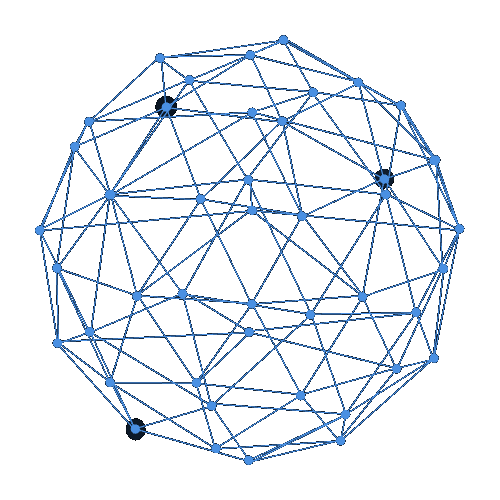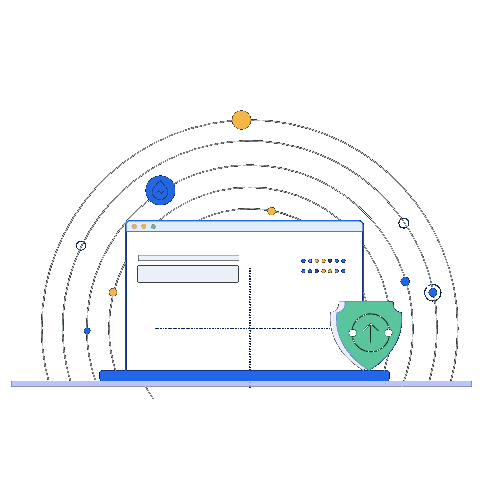
Cyber Attack in Houston Texas? We have the services and solutions you need
Future Valued Customer,
A cyber-attack can take many forms, and victims are often exposed to sophisticated and well-resourced adversaries aiming for financial gain, power, or information. A cyber-attack is an intentional act of gaining unauthorized access to a system, usually with malicious intent. This can include stealing or corrupting data contained within the system or making changes to the system’s security settings, such as those related to authentication.
Frequently, cyber-attacks are seen as either hacking or malware related or sometimes a combination of both. The following is an overview of a cyber-attack, how it works, who is responsible for it, and its effects.
Frequently Asked Questions:
What is a cyber attack?
A cyber-attack is an intentional act of gaining unauthorized access to a system, usually with malicious intent. This can include stealing or corrupting data contained within the system or making changes to the system’s security settings, such as those related to authentication.
A cyber-attack can be carried out by anyone with the necessary skills and knowledge, including individuals, organized groups, or even nation-states. Organizations turn to software companies such as TX Solutions to better protect their systems, which develop and sell tools that can detect and block different types of attacks.
What are cyber attacks?
Cyber-attacks are any acts of sabotage, espionage, or disruption. The term is often used in the context of computer security to describe several different types of attacks that involve hacking into a computer network. These include computer intrusions and malware infections; other examples include denial-of-service attacks (where Internet traffic is blocked) and employee theft and sabotage.
Depending on their particular intention, these types of cyber-attacks impact the computers, applications, or networks connected to the Internet. For example, mobile devices often target cybercriminals, who install fake apps to trick users into disclosing confidential information such as usernames and passwords or any other information relevant to their activities.
What does a cyber attack mean?
A cyber-attack means any deliberate attempt or successful intrusion into a computer system or network intending to cause harm. This could be for political, financial, or personal gain, to disrupt business operations, or to damage data or systems. To carry out a cyber attack, an attacker will use a range of techniques, including exploiting vulnerabilities, social engineering, or using malware. The Cyber Security Alliance (CSA) has reported that cybercrime costs the U.S. around $400 billion a year, while the FBI reports that over 80% of all cybercrime goes unreported. This makes cyber crime a large and growing problem in our society, and organized criminals and nation-states mainly perpetrate it. TX Solutions is a leading provider of cyber security solutions and services. We help organizations to defend against cyber attacks and protect their data and systems from harm. For this reason
How do cyber attacks work?
There are many ways that cyber attacks can be carried out, but most involve some form of online access to a target’s computer system. Once the attacker has gained access, they can then exploit vulnerabilities to cause damage or disrupt service.
Attacks are carried out by skilled adversaries who take their time to understand the system they are targeting before they launch the attack. They establish or find the flows in the code which will allow them to enter the system and then use these flows to bypass security controls. In turn, they enter their code into the system, which gives them complete control. A successful attack has three components:
• The technical ability to exploit a vulnerability in the system.
• The motivation to want to cause harm or disrupt service.
• The opportunity to carry out the attack is often determined by the attacker’s level of access.
The technical ability to exploit a vulnerable system can be achieved in many ways. Hackers can buy or find exploit code on the Internet which takes advantage of known vulnerabilities. They can also write their code to exploit a particular system. When a new vulnerability is discovered, it can be exploited by anyone who knows about it until the vendor releases a patch.
The motivation for carrying out an attack can vary but often includes financial gain, political or ideological reasons, or simply the satisfaction of causing damage. In some cases, attackers may have no specific motive other than to cause disruption. They deem it a success whenever they can cause the system to fail or to slow down.
The opportunity to attack is often determined by the level of access that the attacker has to the target system. An attacker with inside knowledge of the system will have a much easier time attacking someone outside the system. In some cases, an attacker may be able to gain access to a system through the use of stolen credentials or by social engineering. They may also be able to exploit vulnerabilities in third-party software to gain access to the system.
Once an attacker has gained access to a system, they can then exploit vulnerabilities to cause damage or disrupt service. Common ways of causing damage include deleting files, corrupting data, or encrypting files to hold them for ransom. Disrupting service can be done by bringing down the system entirely or slowing it down, so it is unusable.
Cyber attacks can significantly impact businesses, governments, and individuals. They can lead to financial losses and damage to reputation.
Who is responsible for cyber-attacks?
As part of the growing concern over internet security, many people are interested in learning who is responsible for cyber attacks. Unfortunately, there is no definitive answer to this question. Depending on the type of attack and the motivations behind it, different individuals or groups could be held responsible.
In some cases, cyber attacks are carried out by lone individuals who are simply looking to cause mischief or disrupt operations. In other cases, they may be launched by organized groups with more nefarious purposes, such as stealing confidential information or extorting money from victims. Regardless of who is responsible, though, the effects of a cyber attack can be significant and far-reaching.
If you believe that you have been the victim of a cyber attack, it is important to take steps to protect yourself and your information. TX Solutions offers a variety of services to help you secure your online presence and defend against future attacks. Contact us today to learn more about how we can help you.
Additionally, suppose you are concerned about who might be responsible for a particular attack. In that case, you can always report it to the authorities so that they can investigate and try to track down the responsible party. We can make the Internet a safer place for everyone by working together.
What does a cyber attack look like?
Well, you may be wondering what a cyber-attack looks like. Essentially, it is any type of attack that is carried out electronically through the use of computers and the Internet. This can include things like hacking, viruses, phishing scams, and more.
So, how do you know if you’re a victim of a cyber-attack? Usually, cyber-criminal are intelligent and patient. They will take their time to study their target before launching an attack. This means that, in most cases, you won’t even know that you’ve been attacked until it’s too late.
However, there are some telltale signs that you can look out for. For instance, you may notice strange or unexpected activity on your computer, such as new files appearing or programs opening and closing by themselves. You may also find that your internet connection is suddenly slower than usual or that you’re receiving strange emails or pop-ups.
These are just a few of the many signs that you may be under attack. More sophisticated attacks can be much more difficult to detect; thus, organizations or government enterprises are using Artificial Intelligence (AI) software to detect these types of threats.
What are the types of cyber attacks?
1. Malware attacks: These attacks involve malicious software, such as viruses, worms, and trojan horses, which are designed to damage or disable computers.
2. Phishing attacks: These attacks attempt to trick users into divulging sensitive information, such as passwords or credit card numbers, by masquerading as a trustworthy entity in an email or other communication.
3. Denial-of-service attacks: They flood a network with traffic, disrupting legitimate users from accessing the resources they need.
4. SQL injection attacks: You exploit vulnerabilities in web-based applications that use SQL databases. Inject malicious code into the database, which can then be executed by the application.
5. Man-in-the-middle attacks: They intercept communications between two parties to eavesdrop on the conversation or even manipulate the data being exchanged.
6. Password attacks: These include brute force attacks, in which hackers use automated software to guess millions of password combinations until they find the right one, and dictionary attacks, which use a list of words to guess passwords.
7. Crypto jacking: They hijack a victim’s computing power to mine cryptocurrency without their knowledge or consent.

Cyber-attacks come in all shapes and sizes, but they all have one thing in common: they’re designed to harm or exploit victims. Whether you’re a business or an individual, it’s important to be aware of the risks and take steps to protect yourself. TX Solutions offers a variety of services that can help you secure your online presence and defend against future attacks. Contact us today to learn more about how we can help you.






